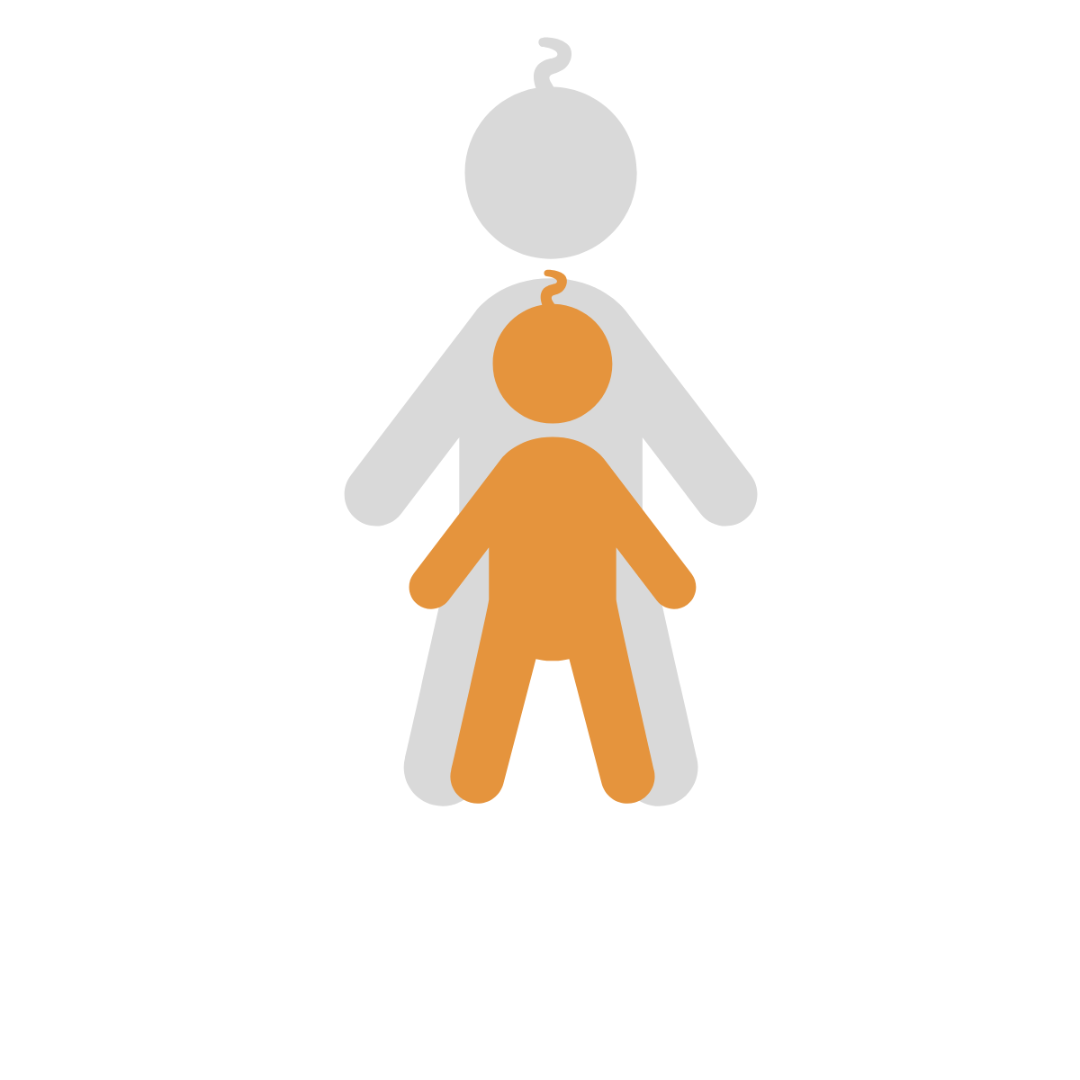CONSEQUENCES OF CHRONIC MALNUTRITION
The consequences of chronic malnutrition on a child’s development are largely irreversible.
 |
1. Stunted physical growth1 in 5 children under 5 are stunted. That is 144 million children globally.Chronically malnourished children are shorter, on average than children who received sufficient nutrition. This is known as stunting. Stunting affects their adult height and limits their physical productivity. It also puts women at a higher risk of birth complications due to the smaller size of their pelvises, which can have dramatic consequences in places where access to healthcare is limited. Stunting in children is the physical symptom used to measure the prevalence of chronic malnutrition in a population. More than a physical characteristic, stunting from chronic malnutrition is a sign of other development problems. |
 |
2. Reduced ability to learnChronically malnourished children do less well in school and earn less as adultsDuring the first two years of our life, we develop over one million neural connections per second – the most we ever will. By age two, 70% of a child’s brain has formed. Nutrition plays a central role in this process: without the right balance of nutrients including protein, zinc, iron, folate, iodine, or vitamin A, brain growth is adversely impacted. Children who were chronically malnourished during the first 1,000 days of their life perform less well in school and are more likely to repeat grades or drop-out. As adults, they earn less income than their peers. |
 |
3. Weak immune systemSeverely stunted children are 5 times more likely to die before the age of 5Almost half of deaths in children under the age of 5 are attributable to malnutrition – that is over 3 million children dying every year. Because nutrition during the first 1,000 days of life affects the development and functioning of the immune system, chronically malnourished children are at higher risk of dying from common infectious diseases such as diarrhea, malaria or measles. Paradoxically, chronic malnutrition in early childhood also increases the risk of obesity and associated non-communicable diseases such as diabetes in adulthood. |
Chronic malnutrition’s consequences impact the entire life of an affected person as well as the country’s economy.
 |
1. Intergenerational ramificationsA chronically malnourished mother is at risk of having a malnourished babyThe birth weight of babies is also linked with both the mother’s weight and height, which means the mother’s nutrition both in childhood and during pregnancy play a role. A stunted girl grows into a stunted woman and is at higher risk of giving birth to a small-size baby, who is at risk of repeating the cycle. The loss of income attributable to chronic malnutrition enables this cycle by keeping generation after generation in poverty. |
 |
2. Economic cost for individualsIt is estimated that stunted children earn 20% less as adultsStunted children experience economic losses as adults in three ways: decreased physical productivity, decreased cognitive abilities, and increased health care costs associated with weak immune systems. It is estimated that stunted children earn 20% less as adults. |
 |
3. Economic cost for countriesGlobally, malnutrition costs US$3.5 trillion to the economy annuallyEconomic cost for countries: The estimated cost of child undernutrition in Africa ranges from 1.9% of Gross Domestic Product (GDP) in Egypt to 16.5% in Ethiopia, crippling the economic progress of most-affected countries. Globally, malnutrition costs US$3.5 trillion to the economy annually. |